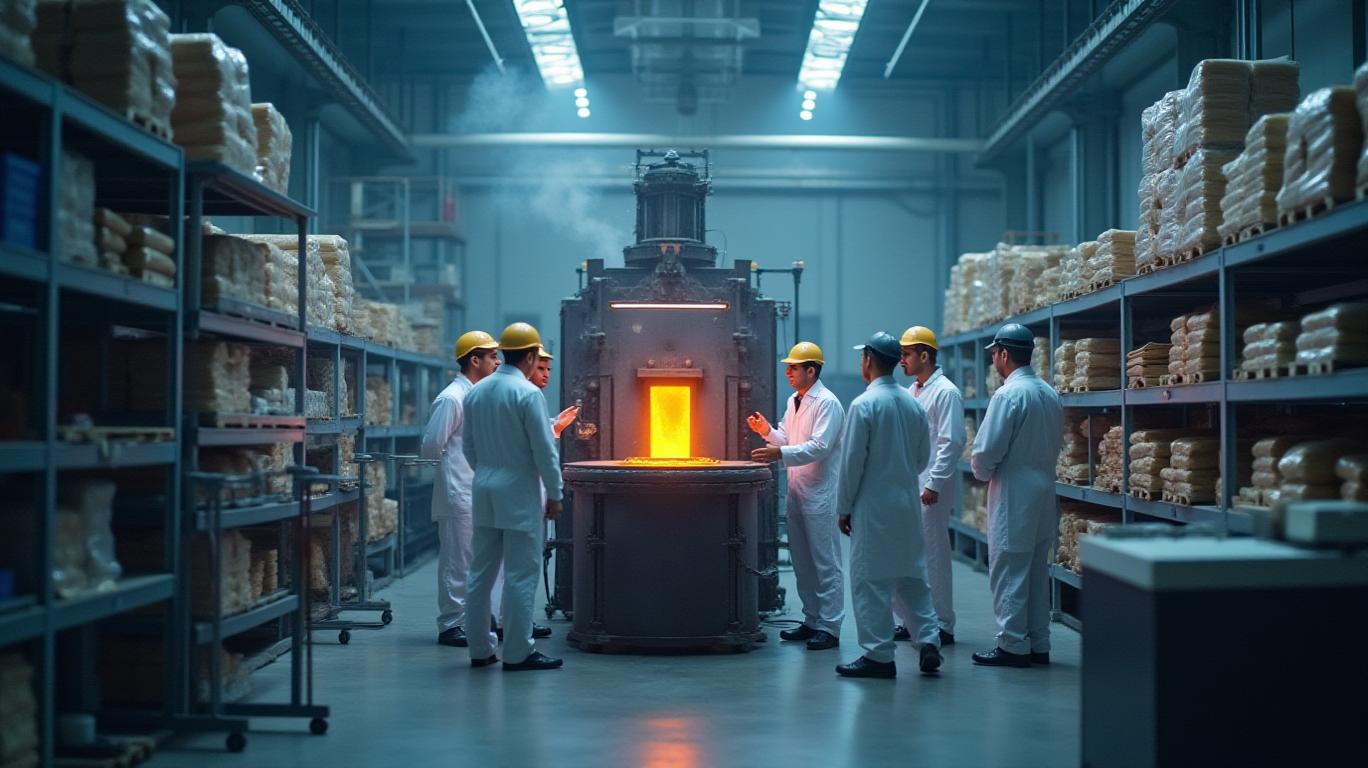Nano One's Q1 2025 Results: A Catalyst for Lithium-Battery Dominance
The lithium-ion battery market is on a collision course with exponential growth, driven by the global shift to electric vehicles (EVs) and energy storage systems. Nano One Materials Corp. (TSX:NN) has positioned itself at the epicenter of this revolution with its Q1 2025 results, demonstrating strategic financial resilience and technology scalability that could cement its role as a critical supplier in the EV supply chain. With $29 million in non-dilutive government reimbursements secured, a $27.8 million cash war chest, and its proprietary One-Pot™ cathode process advancing toward commercialization, Nano One is primed to capitalize on an industry expected to hit $250 billion in annual sales by 2030.
The Financial Foundation: Non-Dilutive Funding as a Growth Lever
Nano One’s Q1 results underscore a critical advantage in today’s capital-intensive EV market: access to low-cost, non-dilutive funding. The company has already drawn down $12.8 million in Q1 2025 from government programs, including a $15 million loan from Québec’s Ministry of the Economy and a $3 million grant to advance its lithium-iron-phosphate (LFP) production at its Candiac, Québec facility. Crucially, $29 million in remaining reimbursements are contracted and contingent only on meeting project milestones—such as expanding LFP capacity to over 1,000 metric tons per annum—by early 2026.
This funding structure is a game-changer. Unlike peers that must constantly issue equity or take on debt, Nano One’s reliance on government-backed programs and its $13.7 million sale-leaseback transaction (which transferred ownership of its Candiac facility while retaining operational control) ensures it can scale without diluting equity or overleveraging its balance sheet. The result? A cash position of $27.8 million as of March 31, 2025, providing a runway through Q3 2025 and room to pursue a $40–50 million bought-deal private placement to fund pilot plant completion and pre-commercial sales.
Technology: The One-Pot™ Process as a Cost-Disruptor
At the heart of Nano One’s strategy is its One-Pot™ cathode synthesis process, a patented technology that eliminates costly multi-step manufacturing required by traditional lithium-ion battery producers. This single-step process reduces energy use, cuts production costs by up to 40%, and allows for direct production of high-performance cathode materials at scale.
The Candiac facility, already operational at a pilot level, is now being expanded to demonstrate the One-Pot™ process’s commercial viability. By 2026, the plant will serve as a blueprint for Nano One’s “Design One, Build Many” licensing model, partnering with firms like Worley Chemetics to replicate its technology globally. Early wins include a $12.9 million grant from the U.S. Department of Defense to boost LFP capacity—a material prized for its safety and cost-effectiveness in EV batteries—and a collaboration with Sumitomo Corporation, which signals confidence in the technology’s scalability.

The Path to Dominance: Partnerships and Market Timing
Nano One’s partnerships are not merely symbolic. Sumitomo’s involvement, for instance, opens doors to Japan’s EV ecosystem, while the Candiac expansion aligns with Québec’s $18 million CleanBC Industry Competitiveness Program award, which prioritizes low-carbon industrial projects. By mid-2026, the company aims to finalize engineering designs for a 25,000-metric-ton-per-annum LFP plant, a capacity that would rival industry giants and lock in long-term supply agreements with automakers and energy companies.
The timing is impeccable. As global automakers like Tesla and BYD ramp up LFP battery adoption for entry-level EVs, Nano One’s cost-efficient technology positions it to undercut competitors. Meanwhile, the upcoming AGM (to be held in late 2025) will serve as a confidence-building milestone, showcasing progress on pilot plant construction, first LFP sales, and offtake agreements.
Why Now? A Rare Entry Point Before the Surge
Nano One’s valuation currently sits at a $150 million market cap, a fraction of its potential if it captures even a modest slice of the $250 billion EV battery market. With $29 million in contracted reimbursements still to be drawn, a pilot plant nearing completion, and strategic partnerships solidifying its global footprint, the company is at the inflection point of transitioning from a development-stage firm to a cash-flow-positive, high-margin supplier.
Investors who act now gain exposure to a company that:
- Avoids equity dilution through government-backed funding, preserving shareholder value.
- Benefits from partnerships with industry leaders like Sumitomo, reducing execution risk.
- Targets a market segment (LFP batteries) projected to grow at a 22% CAGR through 2030.
Conclusion: A Low-Risk, High-Reward Catalyst Play
Nano One’s Q1 results are more than just a financial update—they’re a roadmap to lithium-battery dominance. With its One-Pot™ process reducing costs, government funding fueling growth, and partnerships accelerating scalability, the company is well-positioned to outpace competitors in an industry desperate for affordable, sustainable solutions.
For investors seeking exposure to EV infrastructure without the volatility of early-stage plays, Nano One’s current valuation offers a rare entry point before commercialization ramps up. The next 12 months will see milestones—including pilot plant completion, first sales, and AGM updates—that could propel the stock into uncharted territory. This is a company to buy before the market fully recognizes its potential.
Act now, or risk missing the battery revolution.

Comments
No comments yet